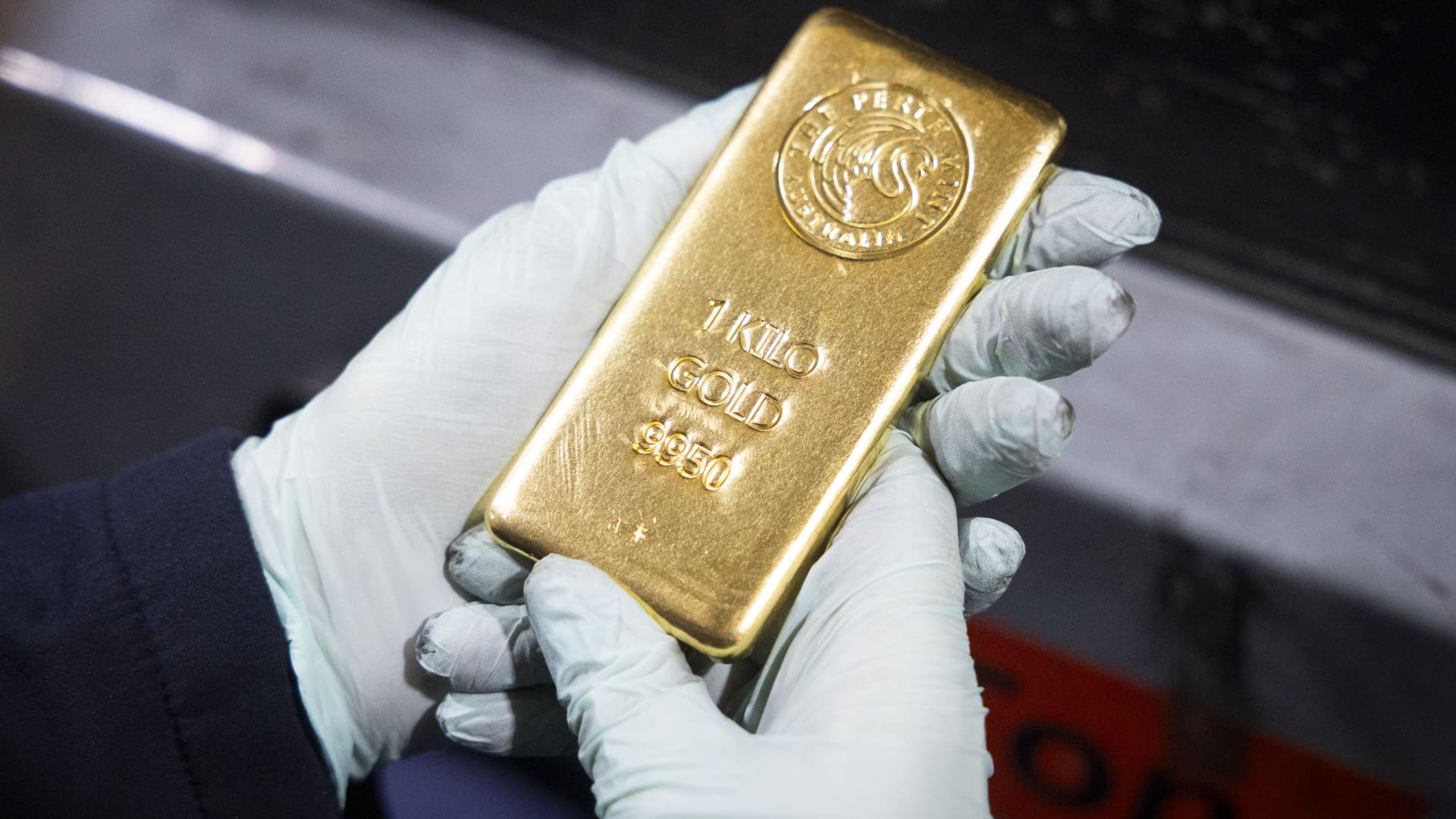Reddit announced Thursday that it is expanding its AI-powered search experience to five new languages: French, German, Spanish, Italian, and Portuguese. With this expansion, the feature is now available in countries like Brazil, France, Germany,…
Blog
-
Is This the End of the Silicon Era? Scientists Unveil World’s First 2D Computer – SciTechDaily
- Is This the End of the Silicon Era? Scientists Unveil World’s First 2D Computer SciTechDaily
- Scientists have integrated 2D materials a few atoms thick into a working memory chip for the first time and you can’t tell me this isn’t some prime…
Continue Reading
-
Social media posts falsely claim Tesla released smartphone – AFP Fact Check
- Social media posts falsely claim Tesla released smartphone AFP Fact Check
- Is Tesla Pi Phone Better Than Samsung Galaxy S26 Ultra? Here’s Everything We Know inkl
- Tesla Pi Phone: Separating Facts from Fiction in Elon Musk’s Rumored Smartphone
Continue Reading
-

Gold rallies beyond $4,300/oz, set for best week in five years
Gold notched a new high above $4,300 an ounce on Friday and was poised for its best week in five years, as signs of weakness in U.S. regional banks, global trade frictions and expectations of more rate cuts sent investors flocking to the safe-haven metal.
Bloomberg | Bloomberg | Getty Images
Gold notched a new high above $4,300 an ounce on Friday and was poised for its best week in five years, as signs of weakness in U.S. regional banks, global trade frictions and expectations of more rate cuts sent investors flocking to the safe-haven metal.
Spot gold was up 0.3% at $4,336.18 per ounce, as of 0233 GMT, after reaching a fresh high of $4,378.69 earlier in the session. U.S. gold futures for December delivery jumped 1% to $4,348.70.
Bullion has risen about 8% so far this week in what would be its best week since March 2020, notching a record high in each session.
Spot silver fell 0.7% to $53.86 per ounce, but stayed on track for a weekly gain. Earlier in the session, prices reached a record high of $54.35, tracking the rally in gold and a short squeeze in the spot market.
“(For gold) $4,500 could arrive as a target perhaps sooner than expected, but much may depend upon how long concerns about U.S.-China trade and the government shutdown linger over the market for,” said KCM Trade Chief Market Analyst Tim Waterer.
China levelled fresh accusations against the U.S. of causing panic over its rare earth controls, while rejecting calls to reverse export curbs.
Meanwhile, Federal Reserve Governor Christopher Waller voiced support for another rate cut due to labour market concerns.
Investors are expecting a 25-basis-point reduction at the Fed’s Oct. 29-30 meeting and another reduction in December.
Elsewhere, Wall Street closed lower on Thursday, with signs of weakness in regional banks spooking investors already on edge over U.S.-China trade tensions.
“The flare-up in U.S. regional bank credit concerns has given traders one more reason to buy gold,” Waterer said.
Non-yielding bullion, which tends to do well in a low interest rate environment, has gained more than 65% year-to-date, driven by geopolitical tensions, aggressive rate-cut bets, central bank buying, de-dollarisation and robust exchange-trade fund inflows,
On the geopolitical front, U.S. President Donald Trump and Russian President Vladimir Putin agreed on Thursday to another summit on the war in Ukraine.
Western nations continued to pressure Russia over its oil sales, with Britain imposing sanctions on major Russian oil firms.
Platinum fell 0.7% to $1,701.0 and palladium lost 0.4% to $1,607.93. Both metals were headed for weekly gains.
Continue Reading
-

Google DeepMind and Yale Unveil 27B-Parameter AI Model That Identifies New Cancer Therapy Pathway
Google DeepMind, in collaboration with Yale University, has announced Cell2Sentence-Scale 27B (C2S-Scale), a 27-billion-parameter foundation model built to understand the language of individual cells.
“C2S-Scale represents a new…
Continue Reading
-
Pokemon Legends Z-A: How to get Bulbasaur, Squirtle, and Charmander early in the game – Times of India
- Pokemon Legends Z-A: How to get Bulbasaur, Squirtle, and Charmander early in the game Times of India
- How to get Chespin, Fennekin, and Froakie in Pokemon Legends: Z-A Nintendo Everything
- How to get the Kalos starters in Pokémon Legends: Z-A
Continue Reading
-

Taylor Swift fans flock to German museum to see Ophelia painting
Taylor Swift fans are driving a surge in popularity of a German museum exhibiting a portrait of the Shakespeare character Ophelia, recently reimagined in a song and music video from Swift’s new album The Life of a Showgirl.
The Hessische…
Continue Reading
-

Britain’s landmark agricultural gene editing law kicks in next month. Here’s what to expect
Over the next few years, we could see the arrival of not just genetically altered tomatoes, but also bananas and potatoes, with traits such as lasting longer, having higher nutrients, and they could (in theory) even be cheaper too.
For…
Continue Reading
-

Ace Frehley, Kiss’s original guitarist, dies aged 74 | Ents & Arts News
Kiss founding member Ace Frehley, the rock band’s original lead guitarist, has died aged 74.
He passed away peacefully, surrounded by his family, in Morristown, New Jersey, his agent said.
He had suffered a recent fall.
A statement…
Continue Reading
-

Swiss court ruling has left a big unknown over Credit Suisse AT1 saga
Unlock the Editor’s Digest for free
Roula Khalaf, Editor of the FT, selects her favourite stories in this weekly newsletter.
The writer is a managing partner and head of research at Axiom Alternative Investments
The AT1 bond market does not have many friends. When Swiss authorities controversially wiped out $17bn of the Additional Tier 1 bonds issued by Credit Suisse, many claimed that the market was dead. As the argument went: “Surely no one would be foolish enough to read the terms and conditions and still buy bonds that can be worth zero overnight?”
Lots of people were, it turned out: since lows hit in the wake of the failure of Credit Suisse, a Bloomberg index of the price of the bonds is up 50 per cent. And 2024 still saw a near 60 per cent increase in issuance to €46bn, according to Barclays. This year issuance has reached €34bn.
AT1s were introduced as a form of supplementary bank capital, designed to be wiped out in a crisis to cover losses. They are crucial to reduce banks cost of equity and increase their capacity to lend. The issue with the Credit Suisse AT1s is whether the bonds were wiped out fairly. The Swiss Federal Court ruled on Tuesday that the treatment of the bonds was unlawful — a decision my investment firm supports as we own some bonds affected and are taking separate legal action. Now we are hearing a similar argument to the one made at the time of the Credit Suisse failure, only in reverse: if you cannot wipe out AT1 capital when an entity is a “gone concern”, the asset class is dead.
But the circumstances of the Credit Suisse saga are idiosyncratic. To simplify, Swiss regulator Finma argued that it had basically three grounds to wipe out the bonds: two contractual grounds based on the terms of the bonds, and one general legal right, as an authority overseeing the bank’s resolution. The court dismissed the contractual grounds with a reasoning that is strictly limited to the specifics of this case. The terms and conditions allowed the wipeout in two situations: i) a notification by Finma of the non-viability of the bank and request by it for the wipeout of both AT1 and Tier 2 bonds or ii) necessary state aid improving the capital of the bank. On the first point, the court noted that Finma issued no such notification and, incomprehensibly, did not wipe out Tier 2 bonds. It could have done so. On the second point, the court says that Credit Suisse only received liquidity, and liquidity does not improve capital.
The last nail in the coffin? Finma argued that, as AT1 eligible bonds, the terms were maybe unclear but should have allowed the wipeout. The court answered that Finma should not have authorised the bonds if they did not meet AT1 requirements.
The discussion on the “general legal right” is also very intriguing. There were many ways for the Swiss authorities to zero the bonds. Swiss banking law gives huge discretion to Finma as a resolution authority and the court points that it explicitly refused to declare a resolution event and wipe out the bonds, presumably to protect the shareholders who received $3.2bn from UBS in the takeover of Credit Suisse and would have been left with nothing in a resolution. Under the Swiss constitution, an infringement on property rights requires a law and emergency ordinances can only be used as a substitute if no law is readily available.
None of this has direct implications for the rest of Europe. European authorities have already proved that swift and strict application of resolution laws can be done with little litigation risk. Sberbank Europe was wound down in 2022 and even the fall of Banco Popular in 2017 did not leave many pathways for AT1 bondholders to pursue redress in court.
Where does this leave UBS? Our firm has an interest in the outcome as we own UBS bonds but hold short positions on the stock. It’s the big unknown, and the Swiss court was very careful to point out that it was not answering that question — yet. This is why it calls its own decision “partial”. But the full text of the ruling hints at three possibilities.
Ruling that the ordinance wiping out the bonds is null could simply mean that the bonds are reinstated and reintroduced in UBS’s balance sheet. Whether UBS could receive indemnification from the Swiss government, in the middle of the current tense discussion on massive new capital requirements for the bank is another story. But the court could also rule that the AT1s remain void and that its decision only opens the right to seek indemnification from Finma or from the now combined Credit Suisse-UBS.
Who pays what in that scenario remains highly speculative — not to mention that this complex decision is not final and Finma will appealed against it. The Credit Suisse AT1 saga is far from over.
Continue Reading
